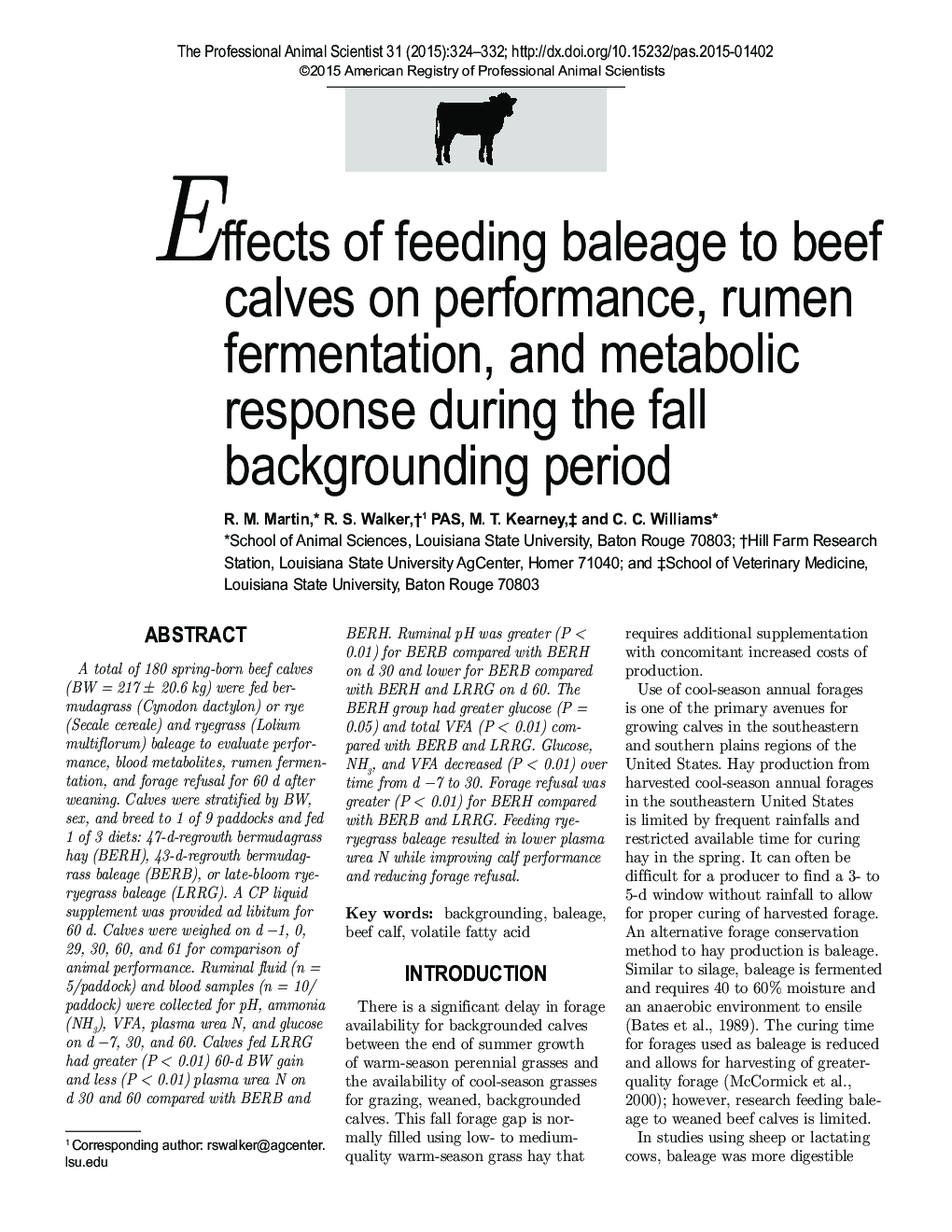| Article ID | Journal | Published Year | Pages | File Type |
|---|---|---|---|---|
| 2453775 | The Professional Animal Scientist | 2015 | 9 Pages |
Abstract
A total of 180 spring-born beef calves (BW = 217 ± 20.6 kg) were fed bermudagrass (Cynodon dactylon) or rye (Secale cereale) and ryegrass (Lolium multiflorum) baleage to evaluate performance, blood metabolites, rumen fermentation, and forage refusal for 60 d after weaning. Calves were stratified by BW, sex, and breed to 1 of 9 paddocks and fed 1 of 3 diets: 47-d-regrowth bermudagrass hay (BERH), 43-d-regrowth bermudagrass baleage (BERB), or late-bloom rye-ryegrass baleage (LRRG). A CP liquid supplement was provided ad libitum for 60 d. Calves were weighed on d â 1, 0, 29, 30, 60, and 61 for comparison of animal performance. Ruminal fluid (n = 5/paddock) and blood samples (n = 10/ paddock) were collected for pH, ammonia (NH3), VFA, plasma urea N, and glucose on d â 7, 30, and 60. Calves fed LRRG had greater (P < 0.01) 60-d BW gain and less (P < 0.01) plasma urea N on d 30 and 60 compared with BERB and BERH. Ruminal pH was greater (P < 0.01) for BERB compared with BERH on d 30 and lower for BERB compared with BERH and LRRG on d 60. The BERH group had greater glucose (P = 0.05) and total VFA (P < 0.01) compared with BERB and LRRG. Glucose, NH3, and VFA decreased (P < 0.01) over time from d â 7 to 30. Forage refusal was greater (P < 0.01) for BERH compared with BERB and LRRG. Feeding rye-ryegrass baleage resulted in lower plasma urea N while improving calf performance and reducing forage refusal.
Related Topics
Life Sciences
Agricultural and Biological Sciences
Animal Science and Zoology
Authors
R.M. Martin, R.S. PAS, M.T. Kearney, C.C. Williams,
